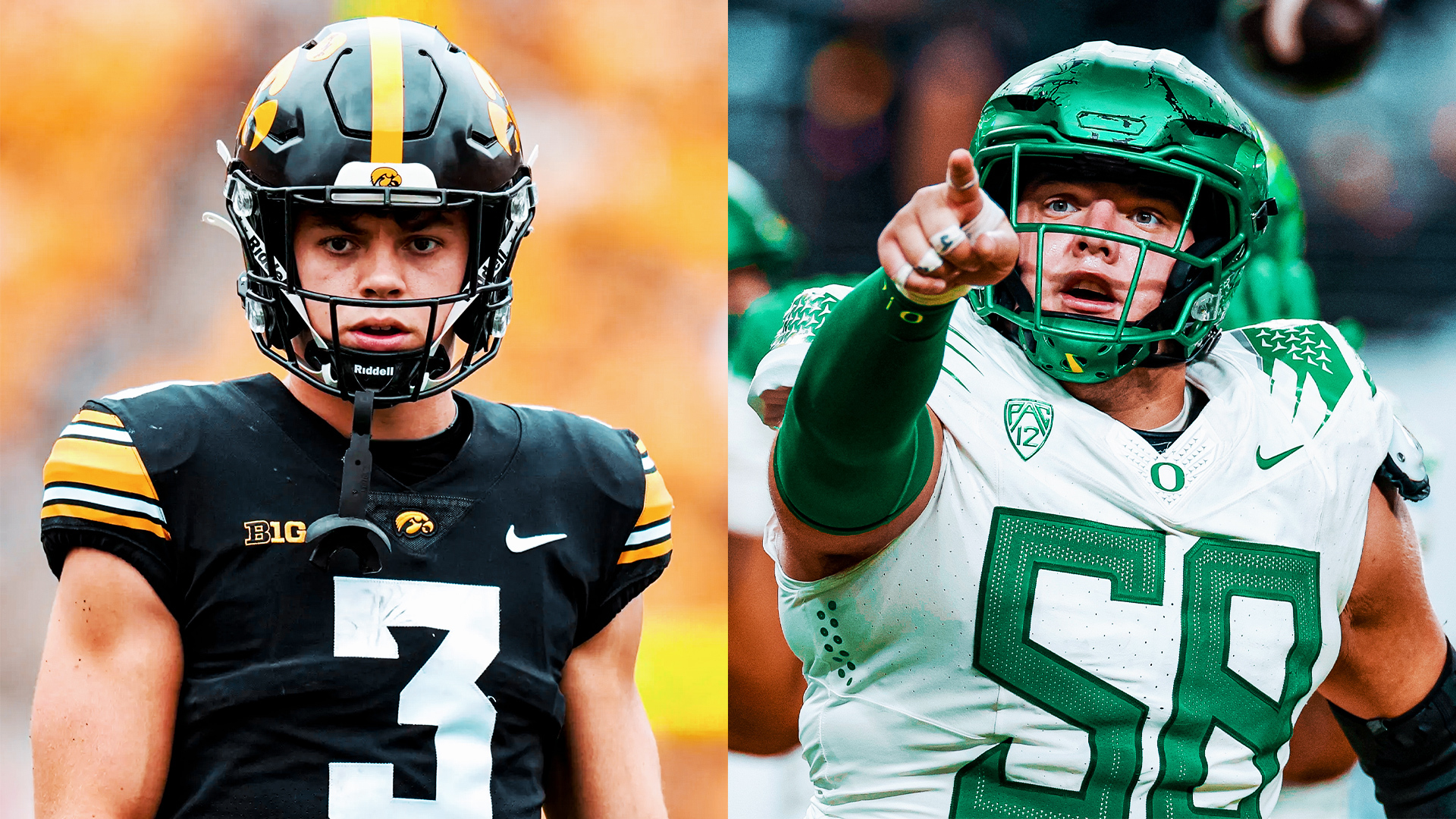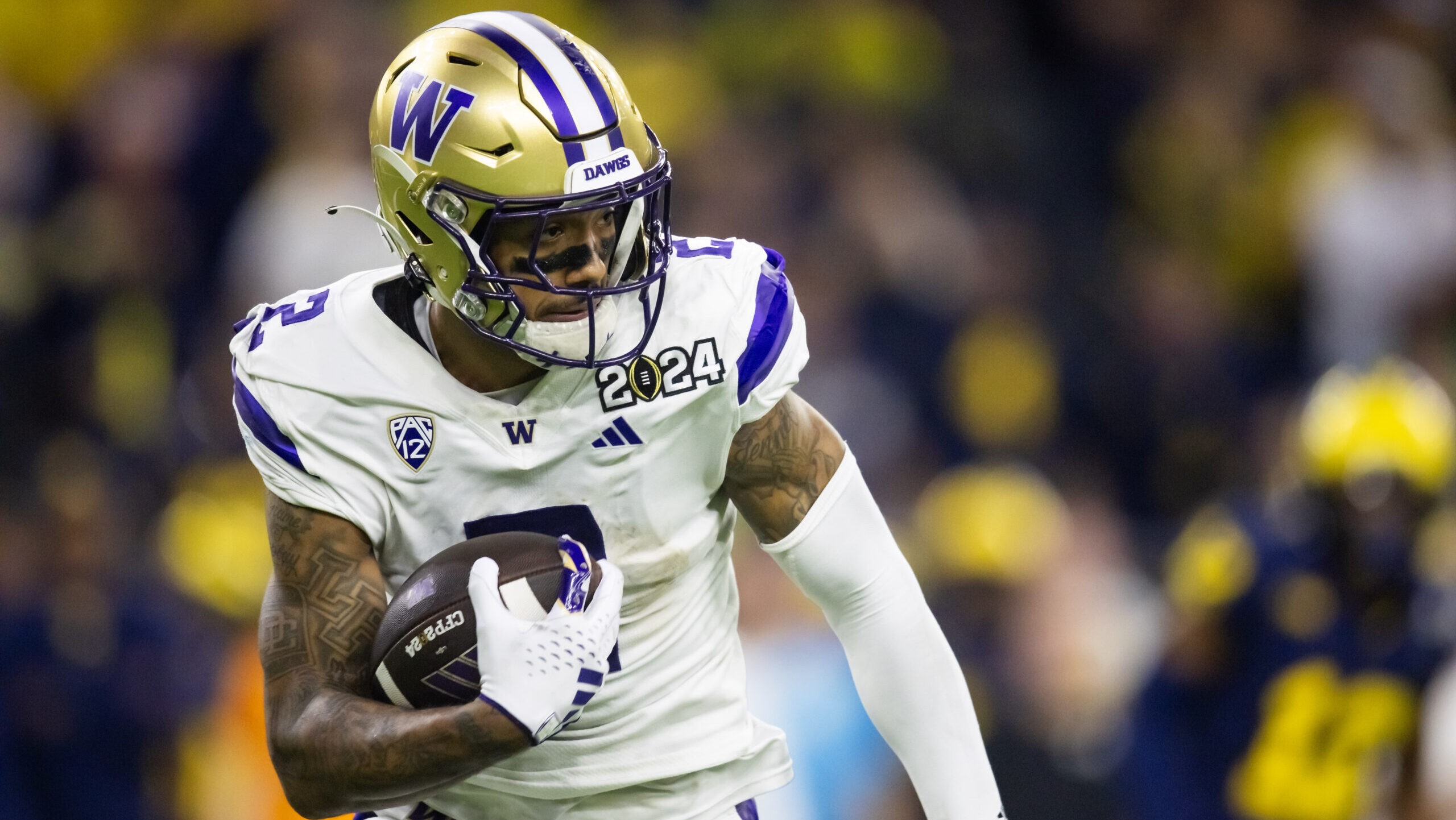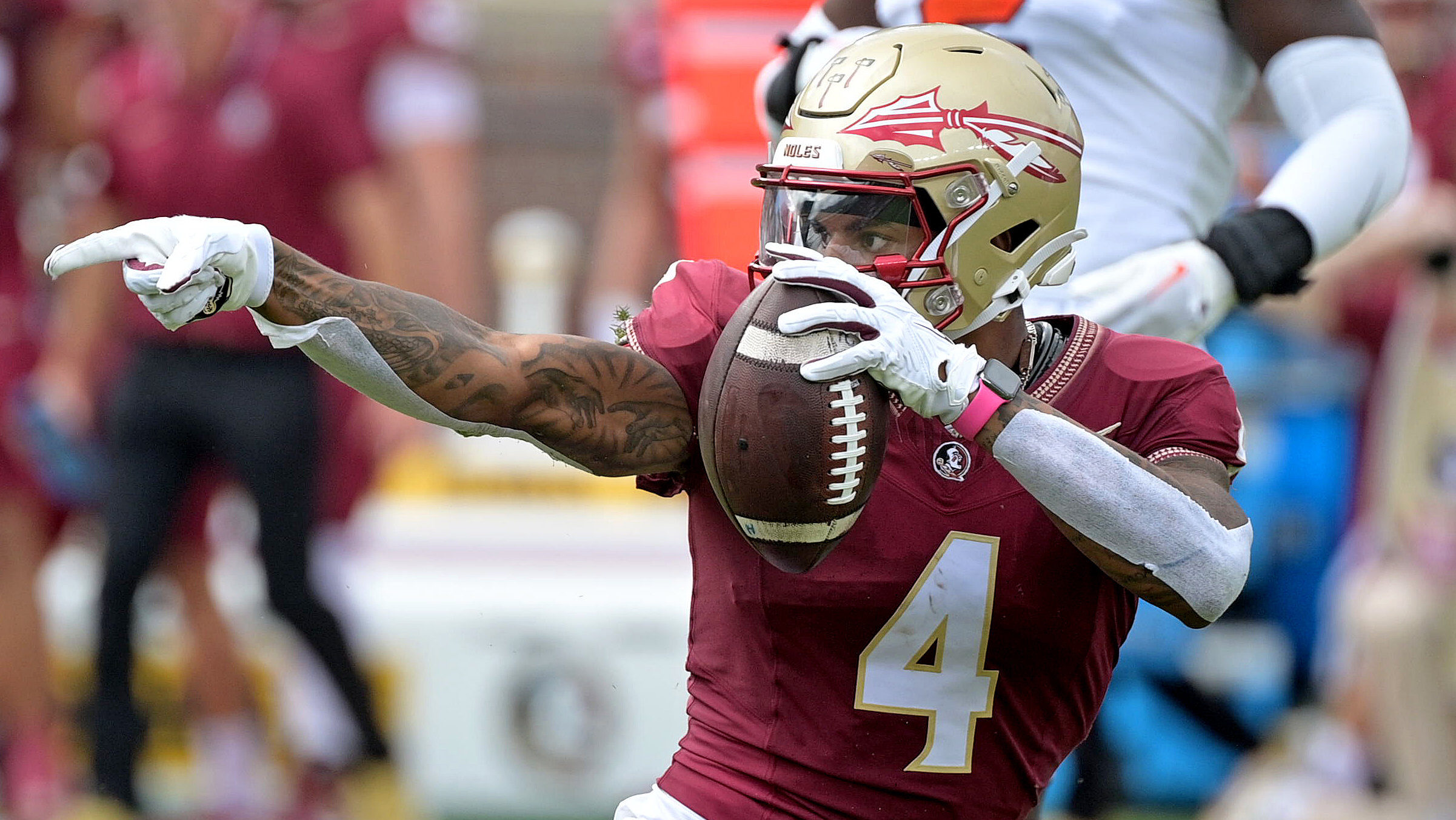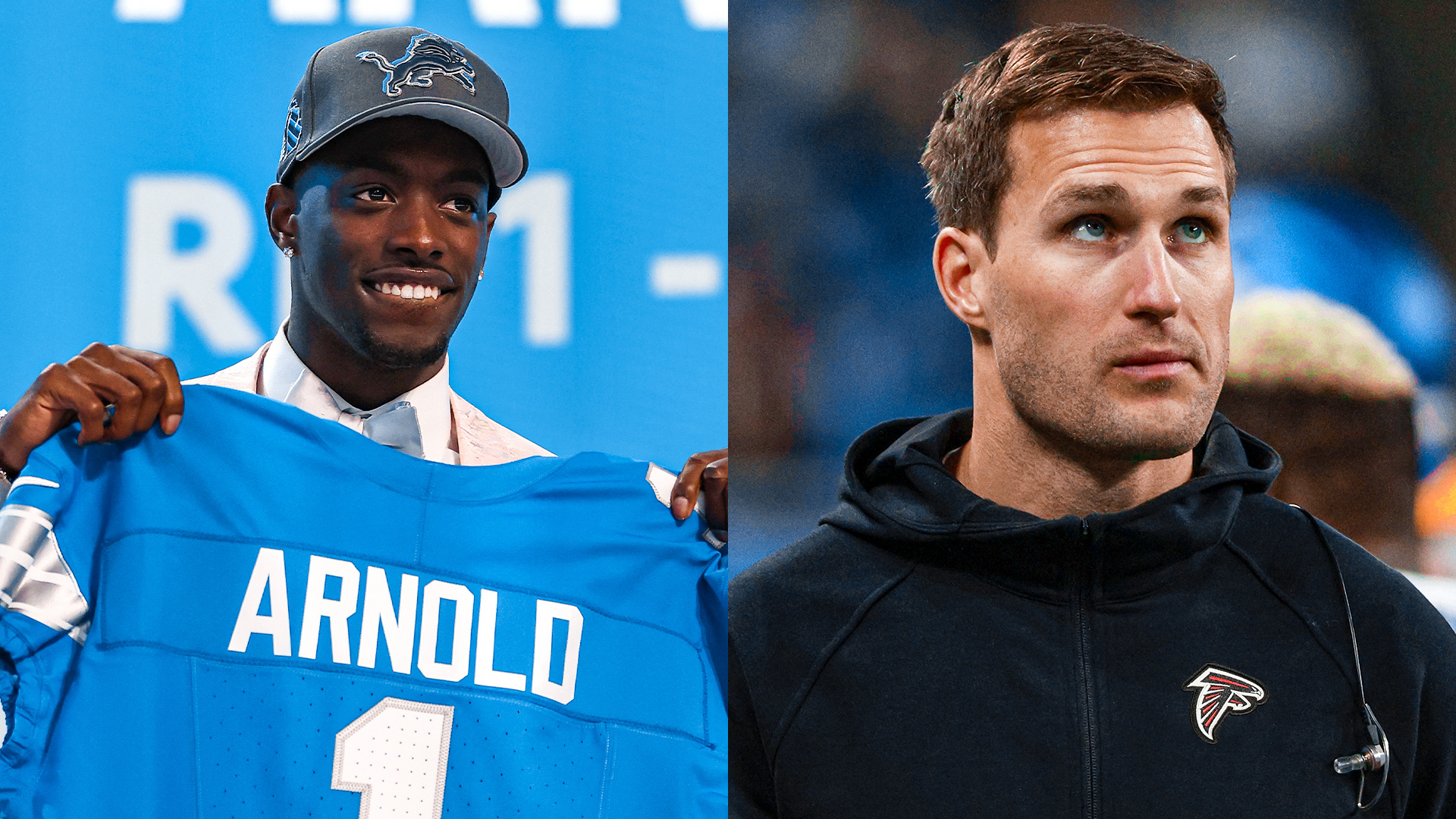Analysis
11/11/23
8 min read
Have NFL Defenses Finally Solved RPOs?
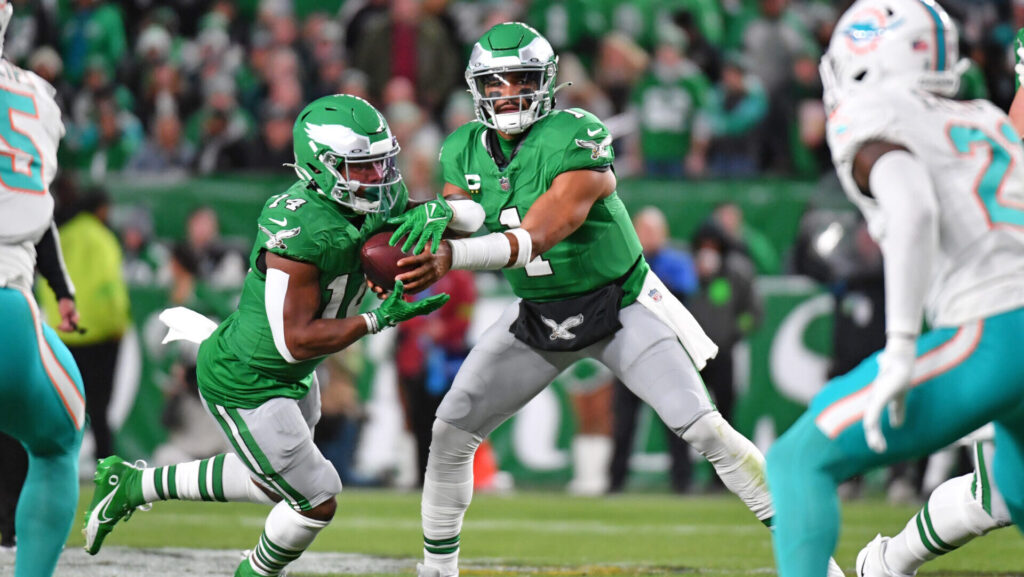
The Philadelphia Eagles had one of the most prolific offenses in the NFL last season. They finished third in scoring and total offense, third in red-zone production, fourth in third-down percentage, fourth in rushing yards and ninth in passing yards.
One of the keys to their offensive success, as it was with many other teams in the league, was their RPO game. Two hundred fifty-eight of the Eagles’ 1,124 offensive plays last season, or 22.9 percent, were RPOs – run-pass options where the quarterback has the option to hand the ball off, throw it, or keep it and run himself.
Those 258 RPOs produced 23.2 percent of the Eagles’ offensive yards in 2022, according to data provided by Sports Info Solutions. They finished third in RPO rush average (5.33) and second in RPO pass average (7.19).
Eventually, Defenses Will Catch Up
In the NFL, though, history has proven that when offenses come up with a clever new gimmick, defenses eventually will find an antidote.
While the 8-1 Eagles’ offense still is one of the best in the league – it's second in scoring and third in total offense – its RPO production has dropped significantly in their first nine games. The Eagles' RPO rush average has plunged from 5.33 to 3.92, and their pass average from 7.19 to 4.53. Just 11.6 percent of their offensive yards this season have been on RPOs.
It's not just them. The defenses clearly have caught up with the RPO game. The league rush average on RPOs has dropped from 4.52 yards per carry last season to 4.2 this year. The RPO pass average has fallen from 5.73 to 4.99.
“I remember my first year in Baltimore (as the Baltimore Ravens’ secondary coach) in 2008,’’ said Chuck Pagano, who was the Indianapolis Colts’ head coach from 2012-2017 and is an analyst for The 33rd Team. “Miami sprung the Wildcat on New England early in the season. They just killed them with it (the Miami Dolphins won the game, 38-13).
“We didn’t play them until 3-4 weeks later; we had tape and could study it. Study the formations and the plays they liked to run with it, how they lined up. The more tape you have and the more time you have to study and prepare and try to formulate a game plan, it’s definitely an advantage. (the Ravens beat the Dolphins, 27-13, that year and held them to 3.2 yards per carry).’’
RPOs aren’t an overnight sensation. NFL teams have been using them with growing frequency over the last several years. In 2018, NFL teams ran 672 RPOs, per SIS. By 2021, that number jumped to 3,782.
There have been 1,919 RPOs in the first nine weeks of this season (136 games). At that pace, the full-season RPO count would be 3,838, which would be the most ever.
Defenses Winning the Battle in 2023
So far this season, though, defenses are winning the RPO battle. Nine of the 12 teams with 50 or more RPO rush attempts last year have seen their rush average drop. Eight of the 10 teams with 30 or more pass attempts on RPOs last year are averaging less than last year.
The Dolphins, who averaged a league-high 10.1 yards per RPO pass attempt last year, are averaging only 7.88 this year.
It should be pointed out that all offensive production is down this season, not just RPOs. Scoring is down (from 21.9 points per game to 21.6). Yards per game are down (from 342.1 to 330.1). Yards per play are down (from 5.4 to 5.2). Rushing yards per game are down (from 121.6 to 109.8).
"I just think defenses are catching up to the RPO game a little bit,’’ said Ben Fennell, an Xs and Os producer for the NFL on CBS and Prime’s Thursday Night Football. “Defensive coaches are doing a better job of defending against them. Teams are better prepared for it and using better technique for it.
“Schematically, you’re seeing more zone coverage overall in the NFL. More than in the last 20 years. This year, zone coverage around the league is at around 70 percent. RPOs are meant to attack moving parts. And a lot of that is post-snap man coverage. But you’re just not getting as much man coverage as you got in the past.’’
The quarterback’s run-or-throw decision on an RPO is essentially determined by the reaction of the linebacker when the quarterback puts the ball in the running back’s belly. If the ‘backer comes up and commits to the run, the quarterback pulls the ball out and throws the ball to a receiver behind him.
“I watch linebackers right now, especially guys like (Seattle’s) Bobby Wagner,’’ said NFL Network analyst Brian Baldinger. “Experienced guys who’ve been in the league a long time. They’re just sitting and waiting on the throw. They’re not committing to the run as fast as you would normally. They’re not taking themselves out of the play. They’re in the passing lane. It leads to a lot of incompletions.
“I did a film session recently with (Jets linebacker) C.J. Mosley, and we were breaking down an RPO play. Twenty-one guys were moving on the play. Everyone’s moving to their position to the block or whatever. But C.J., he’s almost frozen. He’s taking an extra tick to see if the ball is being handed off or being pulled. And he’s just sitting right in the passing lane. If you’re in the passing lane, it makes the quarterback hold on to the ball a little bit longer.’’
How Do Offensive Lines Block?
The offensive linemen are as clueless as the defense as far as not knowing whether an RPO will be a run or pass. They block every RPO as if it’s going to be a run, which often can take them beyond the line of scrimmage and leave them susceptible to an ineligible man downfield penalty if it turns out to be a pass.
The league made the penalty a point of emphasis last year. Ineligible man downfield penalties rose from 68 in 2021 to 131 last year.
“They adjusted some line of scrimmage mechanics and called it more closely in terms of the player being more than a yard downfield,’’ said The 33rd Team’s Dean Blandino, who is a rules analyst for Fox Sports and spent five years as the NFL’s VP of officiating.
The league obviously feels it got its message across. Through the first nine weeks this season, despite the increase in RPOs, there have been just 42 ineligible man downfield penalties.
Besides the fact that defenses are playing more zone coverage and split safety this season, they’re also playing more nickel on early downs, which has been beneficial in defending RPOs.
“When you’re in nickel, you have better matchups underneath against the RPO action that you get,’’ said Leslie Frazier, one of the NFL’s most respected defensive coaches. “Defenses also are lining up their second-level guys a little deeper. You don’t see guys playing downhill on those (run) fakes like you did. It’s because they’re playing more split safety around the league. They’re counting on their defensive front to be able to limit the run part of the RPO.
“That’s probably had as much to do with (the drop in RPO production) as anything, in my opinion. Through the first nine games, the defensive fronts seem to be ahead of the offensive lines when you look at the overall numbers – sacks and pressures and run defense and all of that. When the defensive line is superior to the offensive line, you can play more split safety, which puts you in a better position to play the RPO game.’’
Teams Change vs. Dolphins
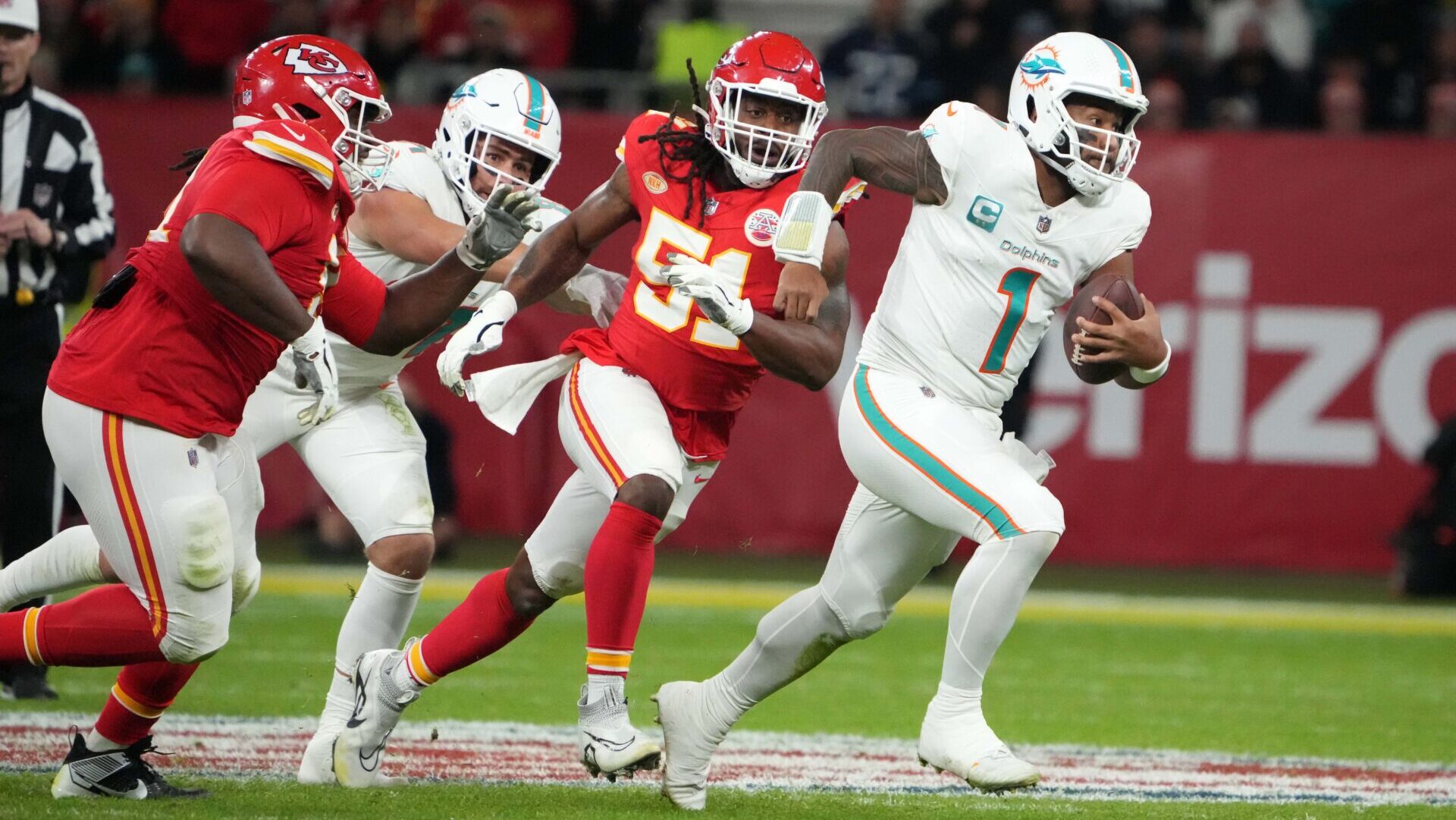
Frazier thinks the Dolphins' two-plus yard drop per RPO pass attempt this season has a lot to do with defenses staying back and not committing to the run.
“Miami wants to get the ball out of Tua (Tagovaiola)’s hands fast,’’ he said. “Teams have gotten better at just staying back and being in those windows where Tyreek (Hill) and Jaylen (Waddle) want to catch the ball and get those yards after the catch. The linebackers aren’t flying up in the A and B gaps to stop the run like they were last year or the year before. That’s made it a little bit harder for RPO teams.
“RPO teams are looking for those yards after the catch. Throw that slant behind the linebacker and let the wide receiver turn it into an explosive play. Now, because of the way the ‘backers are playing and with more teams playing split safety, that’s harder to do.’’
Paul Domowitch covered the Eagles and the NFL for the Philadelphia Daily News and Philadelphia Inquirer for four decades. You can follow him on Twitter at @pdomo.


